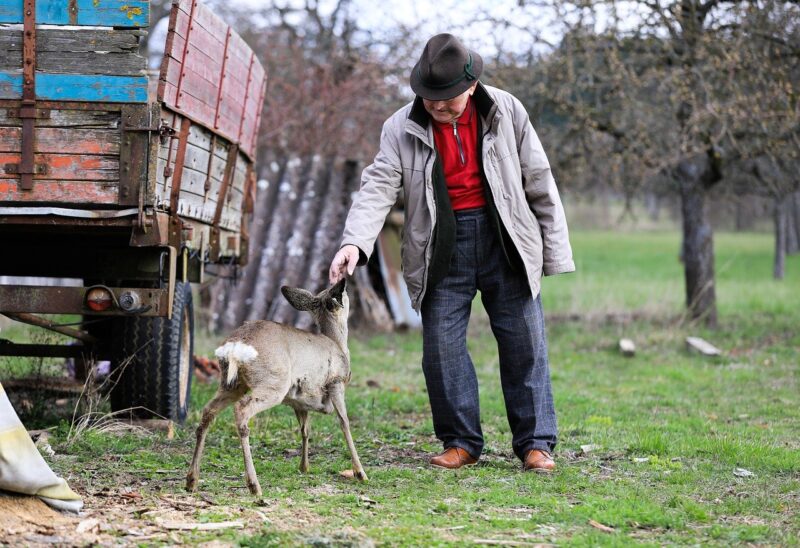Surviving the Ice Age: How Ancient Humans Thrived in Harsh, Frozen Environments
November 14, 2024

The Ice Age, a period that lasted for over two million years, brought extreme climatic changes that forced ancient humans to adapt dramatically to survive.
During the Pleistocene epoch, vast glaciers covered significant parts of North America, Europe, and Asia, transforming landscapes and making survival a daunting challenge. Yet, against all odds, our ancestors not only survived but thrived. In this article, we will explore the innovative strategies ancient humans employed to navigate the formidable conditions of the Ice Age.
1. Understanding the Ice Age: Causes and Conditions
The Ice Age was marked by a series of glacial and interglacial periods, characterized by fluctuating temperatures and equally fluctuating landscapes. The predominant cause of these climate changes was the Earth’s axial tilt and its orbit around the sun, which affected the amount of solar energy entering the atmosphere.
During glacial periods, average global temperatures dropped significantly, leading to:
- Expansion of Ice Sheets: Massive ice sheets extended from polar regions to temperate zones, drastically altering ecosystems and habitats.
- Increased Snowfall: The accumulation of snow created expansive tundra regions which posed both challenges and opportunities for human adaptation.
- Habitat Alterations: The shifting climate led to a decline in forests, transforming landscapes into open grasslands, which were ideal for certain types of hunting.
Understanding these conditions is essential to appreciate how ancient humans adapted to thrive where survival seemed nearly impossible.
2. Key Survival Strategies of Ice Age Humans
Ancient humans employed a variety of ingenious survival strategies, showcasing their remarkable adaptability. Here are some of the most important strategies:
- Use of Fire: Fire was crucial for warmth, cooking, and protection. Archaeological evidence shows that ancient humans mastered fire-making as early as 1.5 million years ago. It provided light during long winter nights and enabled them to cook meat, making it easier to digest and safer to eat.
- Clothing and Shelter: Adaptations included the use of animal skins for clothing to keep warm, and the construction of insulated shelters. These shelters, often built from bones, wood, and stones, were designed to withstand cold temperatures and harsh winds.
- Hunting Techniques: With the decline of megafauna such as mammoths and saber-toothed cats, early humans adapted their hunting strategies. They developed tools like spears, harpoons, and later, more sophisticated projectile weapons to hunt smaller game. Cooperative hunting techniques also emerged, allowing groups to capture prey more effectively.
- Gathering and Foraging: Alongside hunting, gathering plants, nuts, and berries became essential. Ice Age humans learned to recognize edible plants and utilized them in their diet, especially during times when hunting was less successful.
- Migration and Mobility: Seasonal migration was a significant strategy employed by Ice Age humans. They followed animal herds and adapted their living spaces based on food availability, moving to warmer regions during extreme winter months.
These strategies not only helped ancient humans survive but also laid the groundwork for future innovations in habitation, food acquisition, and social structures.
3. Social Structures and Community Living
Social structures played a role in the survival of ancient humans during the Ice Age. Community living facilitated cooperation, resource sharing, and collective learning.
- Collaborative Hunting: Teamwork became essential in large hunting expeditions. Groups would work together to encircle and trap animals, increasing the success rate of hunts. This not only provided food but also fostered social bonds within the community.
- Knowledge Transmission: Elders played an essential role in sharing knowledge about survival techniques, creating a cultural legacy that spanned generations. Skills in tool-making, food preservation, and fire management were critical for survival, making group cohesion vital.
- Family Units: Families formed the core of Ice Age social life. These units provided emotional and practical support, crucial in harsh environments.
Understanding the importance of social structures enables us to appreciate how community and collaboration were vital for survival in extreme conditions.
4. The Archaeological Evidence of Human Adaptation
Archaeological studies and findings provide crucial insights into how ancient humans adapted during the Ice Age. Artifacts discovered in various parts of the world highlight their innovative approaches:
- Stone Tools: Sophisticated stone tools recovered from archaeological sites, such as the Clovis Points found in North America, indicate advanced hunting techniques. These tools reflect the evolving technological capabilities of Ice Age humans.
- Art and Symbolism: Cave paintings and carvings found in Europe suggest that Ice Age humans had complex spiritual beliefs and cultural practices. These expressions of creativity might have fostered social cohesion and provided psychological support during challenging times.
- Remains of Campsites: Evidence of ancient encampments, including hearths, shelter remains, and discarded animal bones, illustrates the lifestyles of Ice Age humans and their adaptations to local environments.
These archaeological records reveal the resilience and innovativeness of Ice Age peoples, shedding light on their daily lives and survival strategies.
5. Lessons Learned from Ice Age Humans
The survival of ancient humans during the Ice Age imparts valuable lessons applicable to contemporary challenges:
- Adaptability: The ability to adapt to rapidly changing environments is fundamental. Just as our ancestors thrived by adjusting to the Ice Age’s harsh conditions, today’s societies must navigate constant change.
- Community and Cooperation: Collaboration and sharing resources are pivotal for overcoming collective challenges. Building strong communities enhances resilience.
- Innovation and Resourcefulness: Creativity and ingenuity can lead to new solutions in adversity. Emphasizing these traits can foster progress in addressing modern-day issues.
These insights from the past serve as a reminder of the enduring human spirit and the capacity for survival through innovation and collaboration.
Conclusion
The Ice Age was a formidable period in human history, yet it was also a time of remarkable adaptability and innovation. Through the use of fire, sophisticated tools, social cooperation, and inventive survival strategies, ancient humans not only endured the harsh winters but flourished.
As we reflect on how these ancient peoples overcame seemingly insurmountable challenges, we can draw inspiration for navigating our own complexities in a rapidly changing world. Their legacy teaches us that with resilience and ingenuity, we too can survive and thrive, no matter the obstacles in our path.







